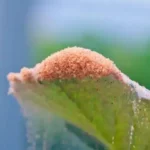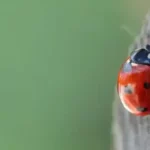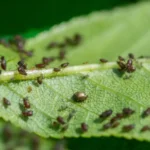Have you ever had a problem with harmful pests like damaging thrips in your backyard garden? If so, you’re probably wondering if there’s a natural way to eliminate these sneaky insects and save your plants. Well, good news, we’re about to uncover the answer to every gardener’s question: Do ladybugs eat thrips and help keep them away from our plants?
Ladybugs are natural predators of thrips. They consider thrips a tasty snack, which makes them excellent helpers in keeping their populations in check. Ladybugs work as an eco-friendly way to manage thrips without using chemical pesticides, ensuring your plants flourish while maintaining a healthier organic garden.
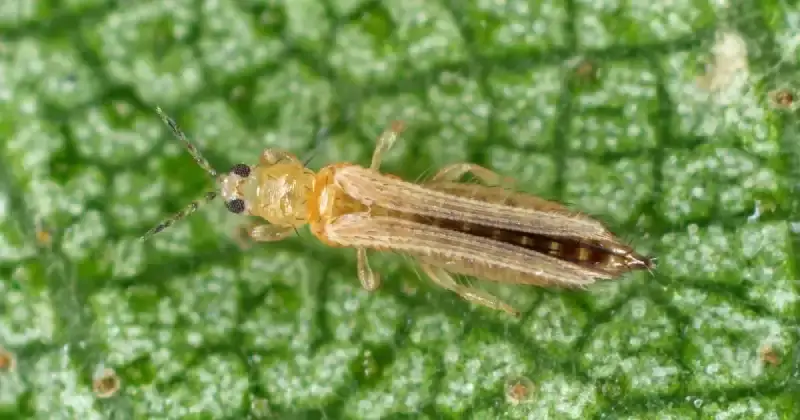
If you’re interested in protecting your garden naturally and organically, without harsh chemicals or sprays, this article will show you how to use ladybugs as an effective option to hunt down thrip infestations that can harm plants.
I’ll also share practical insights into creating a ladybug-friendly garden environment. So, if you’re ready to crank your garden journey up a notch with these fantastic red-speckled bugs, let’s begin.
Humble Highlights
- Discover the tell-tale signs of damaging thrip infestations in your backyard garden and their harmful effects on your plants so you can be better prepared and even prevent this unnecessary challenge BEFORE they wreak havoc.
- Save time by understanding how ladybugs can help control thrip populations in your green food oasis so you can use these tiny but powerful helpers to your advantage throughout the season!
- Discover several innovative ways to attract and keep ladybugs feeling welcome in your garden for effective and eco-friendly thrips control so you can cultivate more food.
Threat Beneath The Leaves: Thrips Infestations
Pests like thrips can be harmful to your plants. In this section, we’ll understand the nitty-gritty of thrips and why they’re bad for your plants.
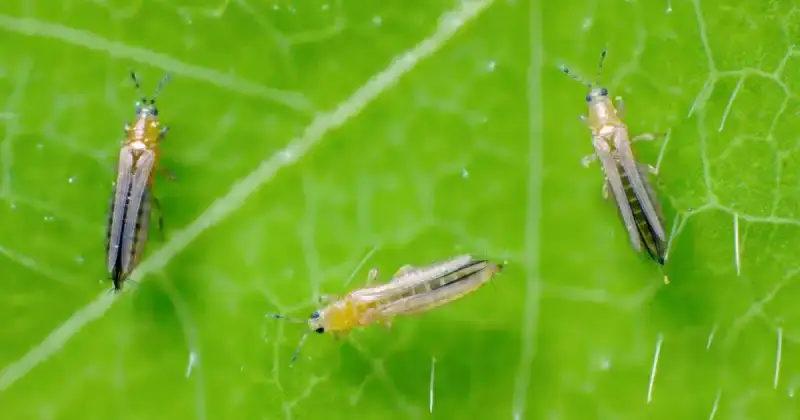
What Are Thrips
Thrips are tiny bugs that can give your plants a hard time. The adult thrips are small and often mistaken for specks of dirt due to their dark color and diminutive size. You may find them hanging out on the upper surface of leaves or soil. 1
On the other hand, the larvae are even tinier with transparent bodies, making them harder to spot, especially on plants with dark green leaves. However, despite their size, these critters can create noticeable issues for your precious plants.
Some species of thrips can also carry Tospovirus, a group of plant viruses that causes severe damage to vegetables, field crops, and ornamental plants worldwide.
Signs Of Thrips Feeding
Thrips can make small white spots and silvery, thready trails on leaves like spider mites. But spider mites can also cause leaves to turn yellow and spotted, with tiny webs, which thrips don’t produce.
The small, sickly white spots on leaves that thrips create are more prominent around the leaf’s edges or in the middle and might not seem like much initially. But if you address them early on, things can get better. Remember, prevention and quick action are a gardener’s best tools!
If these white spots remain untreated, they may quickly spread, turning entire leaves half-white and silvery and eventually causing them to become brittle, die, and fall off. The trouble is that thrips move on to the next set of leaves, worsening the situation as the situation repeats.
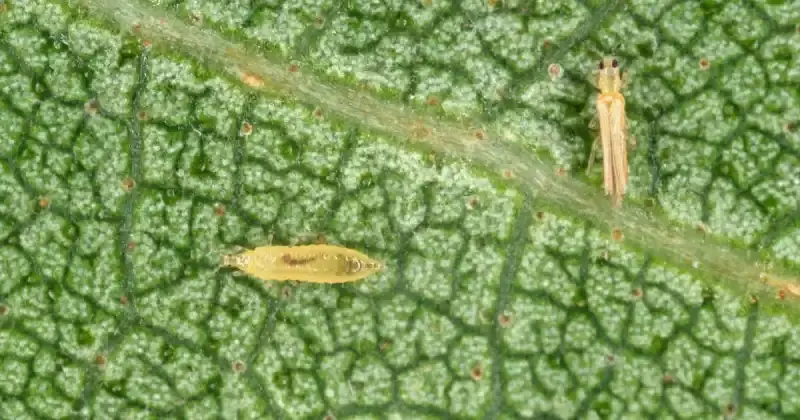
Plant Susceptibility: Species That Are Prone To Thrips Attack
Different species of thrips have specific plant preferences. For instance, Western flower thrips are fond of flowers and young plant parts like tomatoes, beans, lettuce, and eggplant. Melon thrips, on the other hand, target plants from the cucurbit and potato families. Thrips also affect other plants such as tobacco, onions, capsicum, and certain weed species such as alligator weed.
Thrips’ Impact On Crop Yields And Quality
Thrips can significantly affect crop yields and quality. These tiny pests consume plants by puncturing the cells of the leaves and sucking out the contents, causing damage that can lead to reduced growth and development. This damage not only impacts the appearance of the crops but also affects their overall health and productivity. 2
Thrips can also transmit various plant viruses, compromising the harvest’s quality. Effective pest management strategies like releasing ladybugs to your garden, spraying Neem oil, or using diatomaceous earth as natural pesticides are crucial to mitigate the negative impact of thrips on crop yields and ensure a high-quality harvest.
Ladybugs vs. Thrips: Are Ladybugs Effective Against Thrips
When it comes to combating thrips infestations, ladybugs prove to be highly effective natural allies. Lady beetles are voracious predators of various pests and love to eat aphids, mealybugs, whiteflies, thrips, and spider mites.
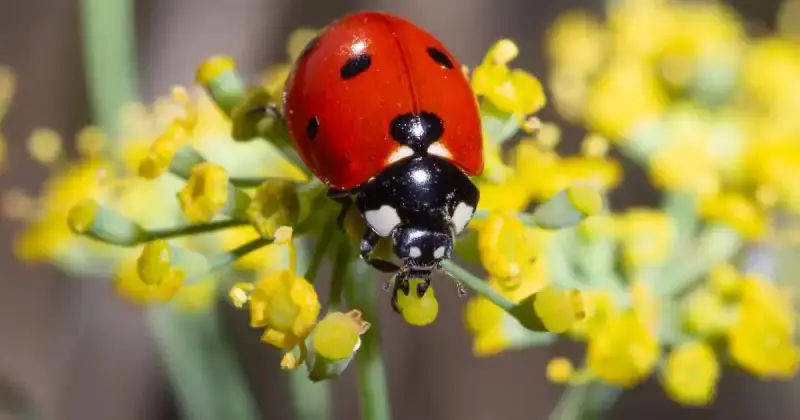
These red-specked beneficial insects are a valuable asset in the battle against these tiny plant-damaging bugs. By using ladybirds in gardens where thrips are a concern, we tap into a natural and eco-friendly method to help control the population of these formidable pests. 3
Thrip Hunters: Types Of Ladybugs That Enjoy Eating Thrips
The most common ladybug species, Hippodamia convergens, is known for targeting all stages of the thrip life cycle. When you release them in your garden, these ladybirds eat thrips and their eggs, so they don’t get the chance to hatch, and they can significantly reduce their population before it can even cause an issue.
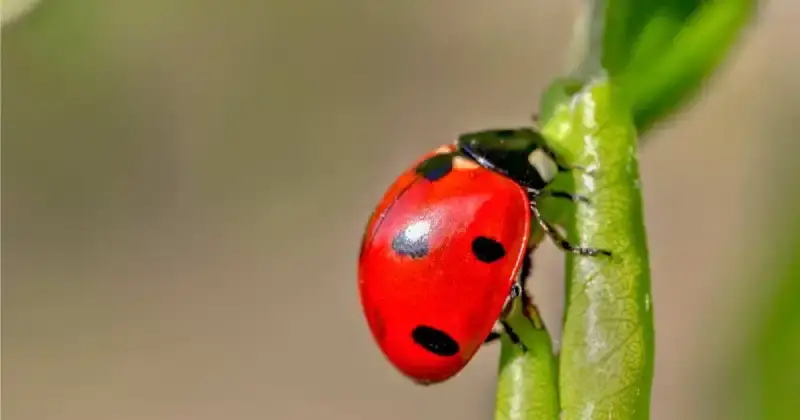
The convergent ladybugs are also easy to find commercially, making them a practical choice for pest control in gardens and greenhouses. Their preference for thrips makes them valuable assets in maintaining healthy plant environments and curbing thrips-related damage.
Another type of ladybird beetle with a fondness for thrips is the Cryptolaemus montrouzieri, commonly known as the mealybug destroyer. While its primary target is mealybugs, this ladybird beetle has also been observed to feed on thrips when mealybug populations are low. 4
Interestingly, ladybug larvae are more voracious than their adult counterparts, so providing alternative food sources is essential. If thrip populations decline, ladybugs might need other prey to make it worth their while to stick around in your garden. Plant nectar-rich flowers nearby to keep them well-fed and shallow bowls of water to drink.
Inviting Ladybirds To Stay: Tips For Attracting And Retaining Ladybugs In Your Garden
Ladybugs are wild insects, and releasing them in your backyard garden doesn’t guarantee they’ll stay. So, timing is critical. If you want to release ladybirds in your garden to kill thrips, do it at dusk to help them settle down and not fly away. But there are other ways to ensure ladybugs stay in your organic garden.
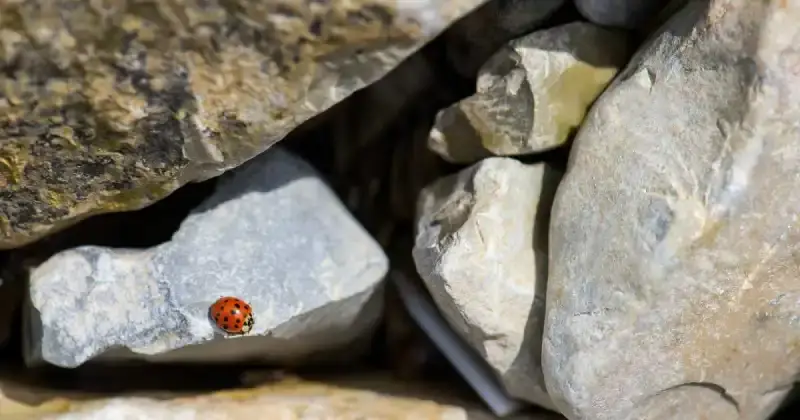
Let’s look at a few other critical factors that can help lady beetles feel welcome in your garden.
Selecting Plants To Attract And Sustain Ladybugs
To create a welcoming environment for ladybugs in your garden, consider planting flowers such as yarrow, fennel, and marigold. These blooms are visually appealing and provide a pollen-rich food source that attracts ladybirds and other beneficial predatory insects like green lacewings into your space. 5
Also, incorporate plants like roses and radishes that naturally attract aphids, which will attract ladybugs and eat the pests in your garden, including thrips. This way, you’re inviting these beneficial insects and adding a splash of vibrant colors to enhance the beauty of your garden.
Remember, ladybugs are voracious eaters, so having a viable and ready food source in your garden is critical for them to stick around. It’s a balance between keeping enough pests for ladybugs to feed on without causing significant plant damage.
Check out this short instructional video below that explains more about these speckled friends and how to feed them appropriately to encourage them to stay in your backyard garden. Remember, ladybugs must have a consistent and abundant food source if they are to call your green space home.
Providing Shelter And Water Sources
Ladybugs seek cozy spots for shelter during colder months and need access to water for survival. To create suitable shelter options, consider preserving hollow stems and leaving them intact instead of cutting them back. Ladybugs often hibernate in these hollow, open spaces as they feel safe and secure.
Additionally, you can craft “ladybug hotels” by bundling sections of wide bamboo together and filling them with straw. These makeshift shelters offer safe places for ladybugs to rest and overwinter. 6
As for water sources, as previously mentioned, providing a shallow dish filled with water can offer a convenient drinking spot for ladybugs when they’re thirsty. Add some stones to the bottom so they can drink without drowning. Place these bowls in a shaded area to prevent rapid evaporation and ensure they remain accessible. 7
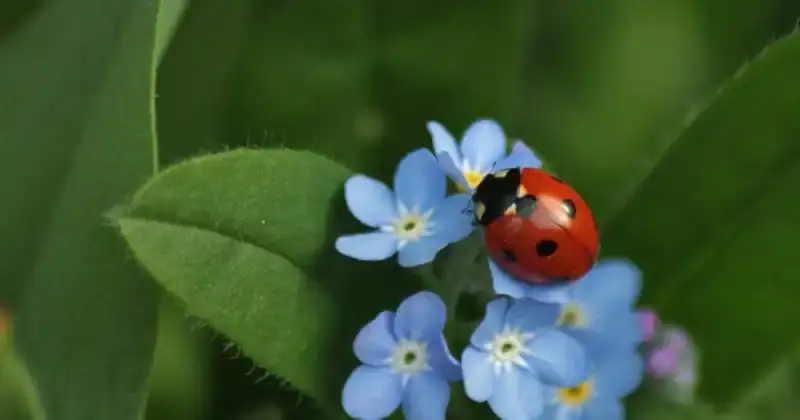
Avoiding Chemical Pesticides
If you want to create an environment welcoming to ladybugs and supporting their vital role in your garden’s ecosystem, refrain from using pesticides. Although intended to target pests, pesticides can often have unintended consequences for beneficial insects like ladybugs. These chemicals can disrupt the delicate balance of nature that these insects rely on, and you won’t only be killing the nasty bugs but the good ones, too. 8
Skipping the harsh pesticides allows natural predators like ladybugs to flourish and naturally control thrip populations in your garden. Ladybugs are excellent at eating and killing adult thrips and their eggs, making them a reliable and eco-friendly solution to pest management.
Apart from the proper release method at dusk, consider weather conditions too. Release ladybugs on a calm day without heavy rain or strong winds to ensure they can settle in comfortably. Remember, they’ll need water, food, shade, and shelter to encourage them to hang around.
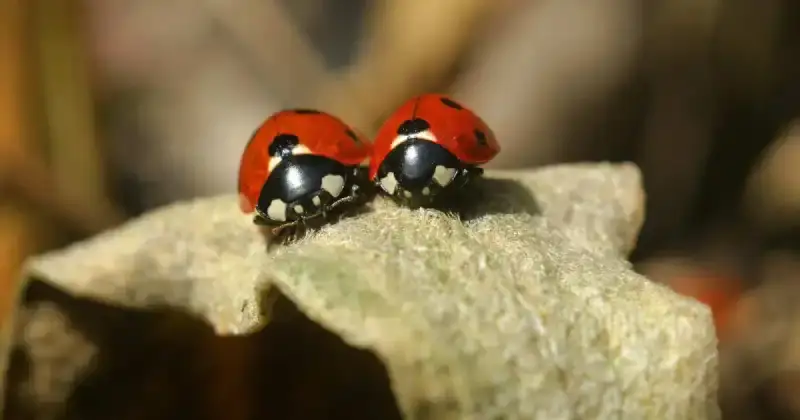
Conclusion
Lady bugs offer a natural preventative and efficient solution for tackling thrip infestations. Their hearty appetite for thrips makes them valuable allies in maintaining the health of your garden.
By encouraging ladybugs to thrive in your garden, you’re harnessing the power of nature’s pest control and creating a harmonious ecosystem that benefits your plants and the environment.
Have you released lady beetles into your garden to fight against encroaching thrip populations? Drop us a line in the comments below, and let us know your story!
SOURCES
- Wikipedia – Thrips
- University Of California, Agriculture & Natural Resources – Thrips
- Bio-Conferences – What Makes Lady Beetles Effective Natural Enemies In Preventative Biological Control?
- University Of Minnesota, Extension – Lady Beetles
- Minnesota State Horticultural Society – LadyBugs, Asian Lady Beetles And Aphids
- Almanac – How To Attract Ladybugs To Your Garden To Eat Pests!
- Oregon State University, Extension Service – Ladybugs – Better To Attract Them Naturally
- National Park Service – Ladybug

